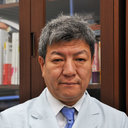Therapeutic effect of bilastine in Japanese cedar pollinosis using an artificial exposure chamber (OHIO Chamber).
Sleutelwoorden
Abstract
BACKGROUND
Environmental exposure chambers have been used to expose subjects to aeroallergens to investigate the efficacy of prophylactic treatment with symptomatic agents in Japan. We first examined the therapeutic effect of bilastine (BIL), a novel non-sedative second-generation H1-antihistamine, in subjects with Japanese cedar pollinosis using an artificial exposure chamber (OHIO Chamber).
METHODS
This was a randomized, double-blind, four-way crossover, placebo- and active-controlled phase II study (trial registration number JapicCTI-132213). Subjects were exposed to cedar pollen (8000 grains/m3) for 2 h on Day -1 and 4 h each on Day 1 and 2. BIL 10 or 20 mg, placebo, or fexofenadine hydrochloride (FEX) 60 mg was administered orally 1 h after the start of pollen exposure on Day 1. Placebo or FEX was administered 12 h after the first dosing. The primary efficacy endpoint was the sum of total nasal symptom score (TNSS) from 0 to 3 h after the Day 1 dosing.
RESULTS
We enrolled 136 subjects and the sum of TNSS on Day 1 of the three active treatments was significantly lower than that of placebo and was maintained up to 26 h after the first dosing (Day 2). The sum of TNSS or sneezing score on Day 1 after BIL 20 mg was more significantly decreased than after FEX. Moreover, BIL showed a faster onset of action than FEX.
CONCLUSIONS
We demonstrated the efficacy, rapid onset, and long duration of action of BIL in subjects with Japanese cedar pollinosis exposed to cedar pollen using the OHIO Chamber.


